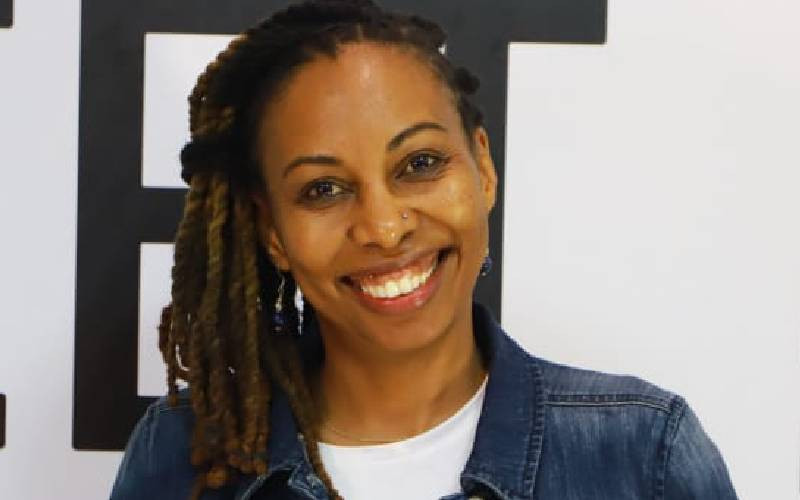“Sustainable peace cannot be achieved without the involvement of women, when women are at the forefront of peacebuilding, the goodies are shared equally,” these were the words of Cabinet Secretary Hanna Cheptumo, during the launch of 3rd National Action Plan on United Nation Security Council Resolution (UNSCR 1325)
The launch, held under the powerful theme ‘women lead, peace follows’ marked both the unveiling of Kenya’s 3rd National Action Plan (KNAP III) and the 25th anniversary of UNSCR 1325.
Adopted in 2000, UNSCR 1325 was a landmark global commitment that recognized how women and girls are disproportionately affected by conflict and affirmed the urgent need to increase their meaningful participation in peace and security efforts worldwide.
Follow The Standard
channel
on WhatsApp
Kenya adopted its first National Action Plan (NAP) in 2016 becoming the 18th African country to develop a NAP for implementing UNSCR 1325. Kenya National Action Plan, KNAP I (2016–2018) laid the groundwork. It focused on awareness and institutional anchoring, aligning the Women, Peace and Security (WPS) agenda with Kenya’s Constitution and key national frameworks. It also established the National Steering Committee on Women, Peace and Security (WPS).
Then came KNAP II (2020–2024), which aimed to deepen coordination and push the agenda down to the county level. By the end of 2024, 19 counties including Garissa, Murang’a, Elegeyo Marakwet, and Mombasa among others had developed County Action Plans (CAPs) to localize the WPS commitments, turning policy into action. Of these CAPs, Kitui County translated theirs to local language – Kikamba.
During this year’s celebrations and the launch of Kenya’s third NAP, County Commissioners serving in conflict affected counties were present as well as police officers especially those serving in Policare- an initiative and policy from the National Police Service (NPS) designed to provide a one-stop center for survivors of sexual and gender-based violence (SGBV). Policare is also celebrated as one of the major achievements of WPS
“At the heart of peace is women” – Jaki Mbogo the Chairlady of Kenya Steering Committee for WPS noted as she made her remarks during the celebrations. Adding that from the first NAP to now, the table has expanded with more stakeholders coming on board.
Community peacebuilders too were present. Mimi siongozi nyumba kumi peke yake, mimi ni kiongozi wa nyumba hamsini” Mama Khadra Shuriya a Nyumba Kumi leader and the founder of Asharaf women group in Garissa.
Sharing and learning from neighbours present was the Minster of Gender and Culture from Uganda, Hon Dr Peace Mutuzu who mentioned that Uganda is on NAP 4. “when a grassroots woman is able to go fetch water and come back safely, then that is peace for her,” she added as she highlighted some of the emerging issues in their context as influx of refugees due to the ongoing conflicts in the region.
Historic appointments in the security sector especially those of Major General Fatuma Ahmed (2024) and Major General Joyce Sitienei (2025) mark milestones in women’s advancement within the Kenya Defence Forces in implementation of Kenya’s NAP II.
Another achievement is the establishment of the Technical Working Group on Gender-Based Violence (GBV) and Femicide in Kenya earlier this year. The group is tasked with reviewing Kenya’s legal frameworks, identifying gaps, and proposing concrete measures to combat GBV and femicide. This effort directly supports the WPS agenda, particularly the Pillar on Prevention and Protection by advancing systemic safeguards for women and girls.
A significant success story of the Participation and Promotion Pillar under KNAP II is the active engagement of men as allies in promoting gender equality and advancing the WPS agenda.
According to the review report of KNAP II, advocacy efforts at the county level by civil society organizations (CSOs) such as KECOSCE have catalyzed the adoption of gender-responsive policies in regions like Kwale and Kilifi. These policies have facilitated the appointment of women to critical roles such as assistant chiefs, chiefs and leaders of peace committees. For instance, in Kwale, sustained advocacy by KECOSCE and the community led to the appointment of four female chiefs.
There is also notable rise in women’s participation in peace structures. Women’s representation in peace committees increased from 14% in 2013 to 34% during KNAP II implementation.
While Kenya celebrates progress, the global WPS landscape remains concerning; the number of violent conflicts worldwide has doubled since 2000, the WPS agenda is increasingly mischaracterized as a “Western” initiative, leading to resistance in some regions and funding for peace and gender programming continues to shrink, threatening sustainability.
Yet, Kenya’s launch of KNAP III (2025-2029) offers hope that when “women lead, peace follows”
KNAP III is bolder and more inclusive with strategic focus areas that respond to today’s emerging issues and challenges, including; strengthening women’s leadership in security institutions, addressing the climate-security nexus, combating technology-facilitated gender-based violence, enhancing cross-border collaboration for women’s peace and security.
The writer is a Social Cohesion and Gender Expert
Follow The Standard
channel
on WhatsApp
By Regina Mwendwa
